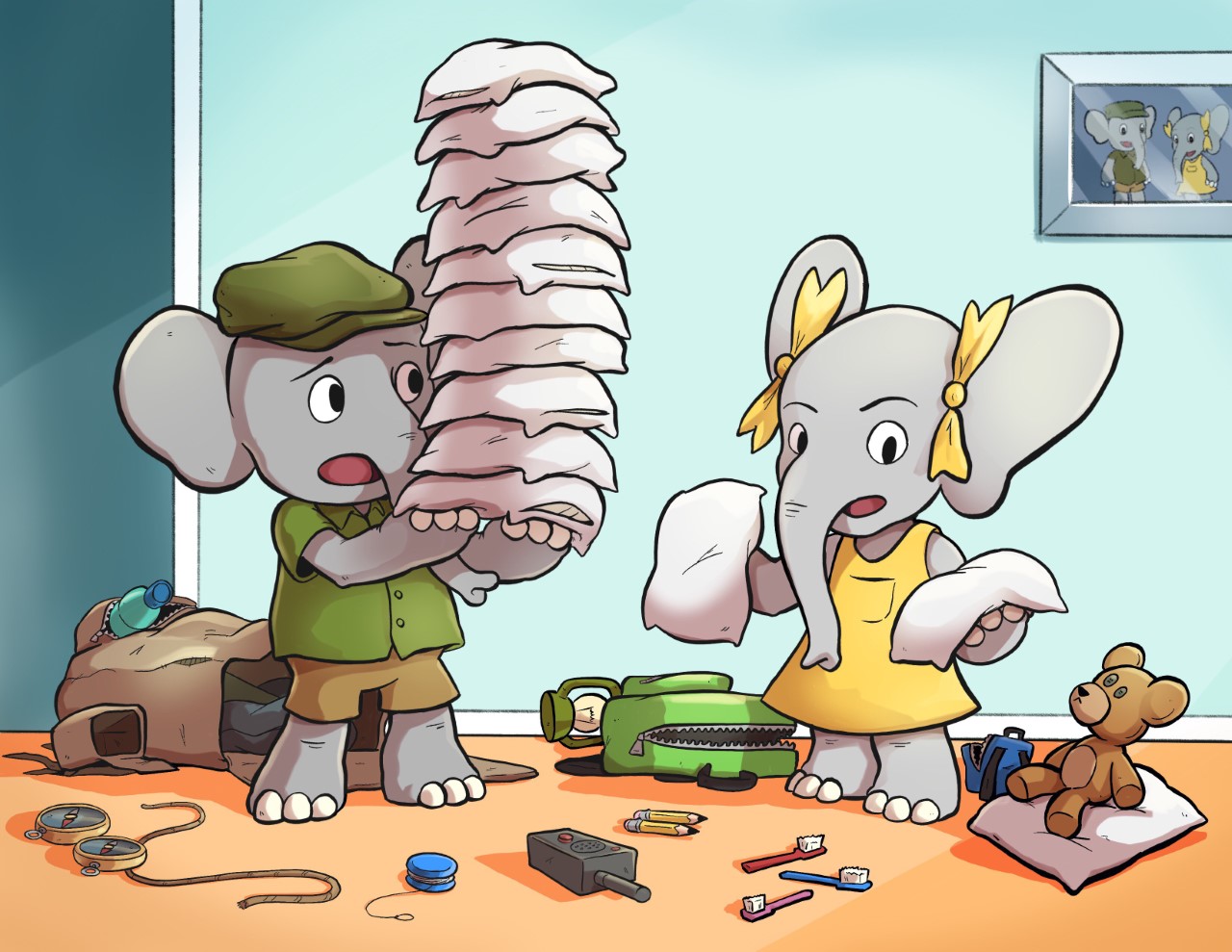Want to help preschoolers can build their foundational math skills? Hand them a picture book, of course.
Introducing pre-K children to words and concepts such as more, most, same, similar, different, few and less is key to developing foundational math skills.
That’s why David Purpura, a professor at Purdue University, and his team collaborated with a children’s book author to produce “The Little Elephants” picture books that have those key terms embedded in the storyline.
“By embedding math into the books, we are able to support parents in teaching their children math in an activity that they already typically do,” says Purpura said, an associate professor in Purdue’s Department of Human Development and Family Studies.
“The Little Elephants” series, launched with a grant from the Heising-Simons Foundation, prompts parents and other adults to ask children math-based questions on each page.
For example, when the elephants attempt to bake a cake and they break some eggs, parents are prompted to ask, “Why aren’t there enough eggs?” and “Now they have a different number of eggs as the recipe. How can they have the same amount?”
The questions, which increase in complexity, spark conversations between child and parent and stimulate verbal mathematical reasoning in the kids, Purpura says.
In a study of 74 children and their caregivers, half read three books with math language over four weeks. The other half read similar books without math language in them.

Children in the first group showed math and math language development growth that persisted even two months after reading the books.
“We were really excited about these findings because parents and children really enjoyed the books, and the books helped to improve children’s math skills,” Purpura said. “In our prior work, we found that there weren’t a lot of books that had math language in them and great storylines.”
Picture books and the interaction between parent and child should lead to academic success later in school, adds Sara Schmitt, the co-principal investigator on the project and an associate professor in the Department of Human Development and Family Studies.
“Children do seem to have a natural curiosity for early math concepts; however, they need to be exposed to informal and formal math experiences and instruction in order to fully develop their mathematical competencies,” Schmitt said. “Asking the embedded questions during the readings provided a fun and engaging opportunity to talk about math.”
More from DA: How math games help level early learning variability
Purpura and his collaborators are now producing six more “Little Elephants” books through grants from the National Science Foundation and Institute for Education Sciences.
Purpura also developed a series of books called “The Pattern Pals,” which is focused on early patterning skills.
“The Little Elephants” and “The Pattern Pals” books are available on Amazon.
Funds from the sale of the books go toward developing new books and purchasing books in bulk to distribute.

